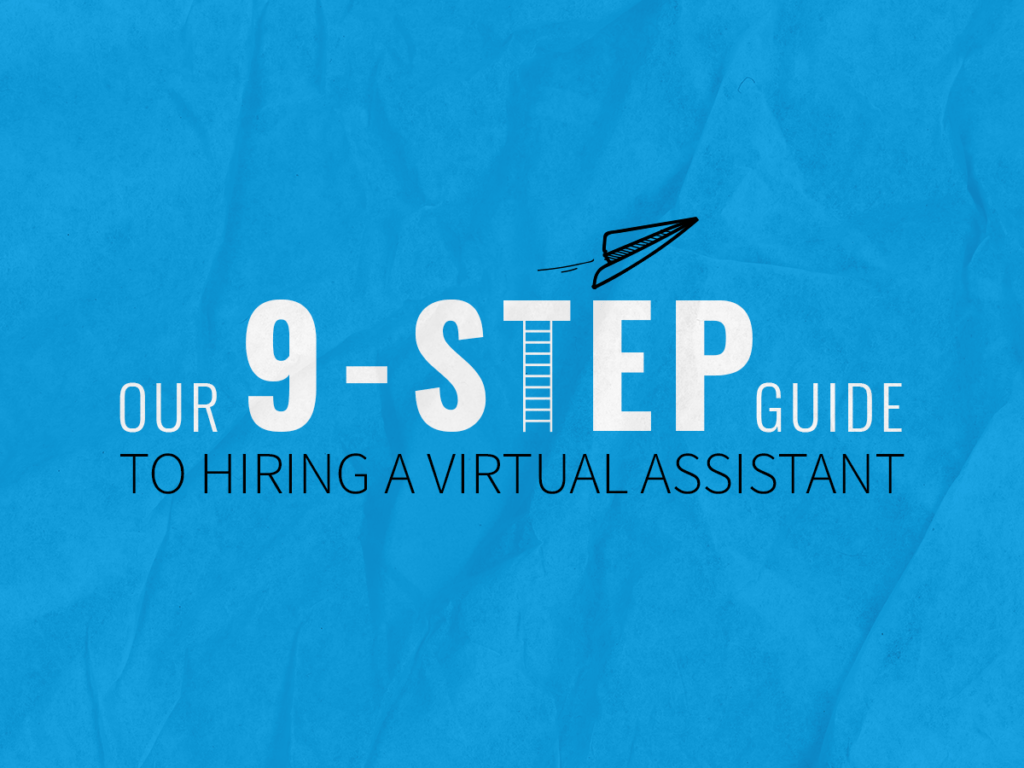If you’re a small business owner with a lot of tasks on your to do list, you are probably considering hiring a virtual assistant. A remote assistant is an excellent investment, because these employees can handle the repetitive day-to-day tasks of running a small business, freeing you up to focus on more important things.
Wing is a managed service that connects small business owners with trained, dedicated remote assistants. We train our VAs to do many tasks that are central to running a company. All Wing VAs speak English and our experienced full-time operations managers oversee and evaluate their work.
The result is a team who can handle any business task that comes your way. But before deciding how to hire a virtual assistant, let’s first consider whether you need a virtual assistant in the first place.
Do you need to hire a virtual assistant?
Before conducting a lengthy search for the right candidate, you should ask yourself if you do need a virtual assistant. A virtual assistant can be very helpful, but only if you are facing time management problems on a regular basis. For instance, if you find that you don’t have enough hours in the day or you are missing important appointments due to menial task management, you should consider hiring a VA to handle some of the overflow.
Let’s look at some of the specific reasons that you may want to bring a VA on to your team.
Virtual assistants help you regain balance in your schedule
A good work life balance is essential now more than ever. As the world has shifted more and more to remote work, workers have reported increasing instances of burnout. In 2021, 66% of managers reported burnout.
A balanced schedule can help combat this and help keep your team focused. But how can VAs help you manage your schedule? After you brief them on your business needs, a qualified remote assistant can start managing your calendar and handling basic customer service phone calls, giving full-time employees more time to pursue non-work-related passions and find inspiration. But schedule management is just one benefit of hiring a VA. Let’s look at a few more.
With a virtual assistant, you’ll be free to work on high-level tasks
There are certain repetitive, low impact tasks that are essential to running a business. A good example is sending and receiving email. Did you know that, according to a study conducted by McKinsey, professionals reported spending 28% of the workweek managing email?
Things like meeting planning, setting up phone calls, taking inventory, and ordering supplies do not require the attention of highly skilled personnel. However, they are still essential. These tasks are perfect for a remote assistant. While a trained VA handles these, you will be available to handle high-level tasks, including:
- Budgeting Resources
- Training New Hires
- Nurturing Leads
- Closing Sales
- Networking
A virtual assistant lets you improve your existing workflows
It’s a fact of business that you will never be able to evaluate and improve your workflows strategically if you are spending all your time completing menial tasks within these. A VA can take on the day-to-day work, freeing you up so you can step outside these processes.
With your newfound time, you can survey employees on what is working and what needs improvement. You can also consider your own experience. With a fresh set of eyes, you will notice inefficiencies and set to work improving workflows for everyone.
9 steps in hiring a virtual assistant
There are a lot of options out there for finding remote assistants, but what if you prefer to conduct the search yourself? If you are conducting a search for the right VA candidate on your own, the process can seem daunting.
In this guide, we’ve thrown together a list of nine steps that are essential to finding the right person. Although this may take a few weeks or even months to find the right person, once you’ve got a qualified VA in place you should start noticing time savings right away.
1. Document the tasks you do in a week
Before writing a listing or reaching out to your network to find the right candidate, take some time to audit your workflows.
Take a week to document the tasks you and your team do, and you won’t believe the scope of the work. Oftentimes we do things that we don’t even consider as core requirements for our job but that take up an inordinate amount of time. These include things like email inbox management, ingoing and outgoing phone calls, basic content marketing, and social media management.
Take note of everything you or your employees do in a day and how much time you devote to each task. A VA who is new to your business may need a little more time to do these tasks at first, but it’s a good benchmark to follow once you have to start assigning tasks to someone else.
2. Choose those you’d like to offload to an assistant
You’ve finally reached the fun part, deciding what tasks you don’t want to do and giving them to someone else!
Not every task will be a good fit for a virtual assistant, but you will be able to carve out many tasks that fit this new role. Once you’re armed with this information you can begin considering how to write the job description.
Some of the tasks that a trained, dedicated VA can help with include:
- Receptionist duties (ingoing/outgoing phone calls, appointment scheduling)
- Fulfillment, product sourcing, customer support
- Basic photo editing and content marketing support
- Social media management
- Basic Website Management
- CRM management
This only scratches the surface of what a competent VA can do for your business, but you’ve got the idea.
3. Convert your notes into a job description
Now that you have a list of relevant tasks, you need to write an enticing job description. Keep in mind that the current hiring environment is extremely competitive, and employees have the upper hand in many negotiations.
You will need to make your company sound exciting and like an interesting place to work. If you can offer benefits like basic healthcare or some time off that will help appeal to candidates as well. When you’re finished writing the job description, ask a few people to review it to make sure that you’ve captured the responsibilities accurately. You’ll also want to make sure your grammar and spelling are on point and the language is professional.
4. Come up with a training program for your VA
Once you have a list of specific tasks it’s a lot easier to develop a training program on these tasks. You should assume that a VA needs to learn many tasks from scratch. This will probably not be the case, but it’s better to be prepared when building a training program.
You can write a guidebook, shoot a few desktop videos, or write a script for a webinar. It’s helpful to have a content asset that employees can take away with them to review later. What that asset is (a book, a one-pager, a webpage) is entirely up to you. Just remember to be thorough as this will likely be your VAs first in-depth introduction to your business workflows.
5. Post your job on a board or freelancer platform
Which freelancer platform is the best for finding virtual assistants? There is no shortage of options, but it helps to be familiar with the most popular choices.
Here is a list of a few platforms where you can find remote assistants:
- Fiverr
- FreeUp
- Upwork
- Indeed.com
- Freelancer.com
Each of these sites has its own policies and fees. Most are free to use but offer higher service tiers for a small upfront cost. They also all take a percentage of your payment as a commission for connecting you with talent. You’ll need to review and vet each of these services before committing to one (a process which could be its own blog post). Once you have decided on one that is right for your business, post your listing and await responses.
6. Screen applicants and create a short list
In the future, phone screens are one of the less qualified tasks that a remote assistant can handle. But for now, you’ll need to conduct phone screens yourself. Here are a list of a few basic phone screen questions that will help vet your candidate pool:
- Tell me about your employment history?
- Why do you want this remote assistant job?
- What skills make you a valuable virtual assistant?
- How many years of experience do you have as a VA?
- What are your salary expectations?
It’s a good idea to note your expected responses to these questions to ensure that the right candidates meet your expectations.
7. Interview shortlisted applicants
Using a basic phone screen, you should be able to whittle your candidate pool down considerably. Once you have 8-10 good candidates you can begin conducting more in-depth interviews. You’ll need to develop a more intensive script for this round of interviews and it should be specific to your business.
Take a moment to envision the perfect VA candidate and how they would respond to all your business needs then develop questions that address those concerns. Of course, no one will be a perfect candidate, but there may be some areas that will be easy to develop (like proficiency on a specific software package), whereas others (like time management skills) should be skills that the right VA can implement on day one.
8. Extend an offer to the best candidate
Once you’ve conducted all your interviews, noted the responses, and shared the findings with your team, you should be ready to extend an offer. You probably have already considered the package you’d like to offer a potential remote assistant candidate, but if not, you’ll need to do so quickly to keep a candidate’s interest. Also remember to have a backup choice in case your first candidate does not accept your offer.
9. If necessary, repeat steps 4 to 8
Unfortunately, you may need to repeat this process numerous times to hire the right candidate. In a competitive hiring environment, many candidates will decline your offer or accept an offer elsewhere. When this happens, you’ll need to go back to step one and begin all over again.
Hiring a virtual assistant through managed VA services
Following the nine steps we’ve outlined in this guide and hiring a VA on your own seems like a lot of work, and truthfully, it is. But there is another way. You can hire a managed VA service to connect you with talented virtual assistants. What is a managed VA service?
A managed service will vet candidates for you, hire talented remote assistants and train them so they’re ready to take on tasks from day one. Managed services also handle benefits packages for their virtual assistant employees.
Here are some of the advantages of hiring a managed VA service:
- Providing easy replacements for VAs
- The service covers VA training and benefits
- Pre-screening, interviewing, and hiring VA candidates
- VA services specialize in finding top virtual assistant talent
Wing manages a global team of talented virtual assistants. Each Wing assistant undergoes four to six weeks of training which includes introductions to commonly used software tools as well as schedule management and phone etiquette. Operations managers at Wing oversee teams of remote assistants, so a replacement assistant can easily substitute for your dedicated assistant in the event of a life event of change in personnel.
Use a Managed Service to Hire Quickly and Efficiently
VAs can add a lot to your business in terms of efficiency, but make sure you are conducting your search for candidates in an efficient way too. Rather than doing all of the legwork yourself, why not hire a managed service with expertise in placing qualified VAs who can contribute meaningfully right away?
For $899/mo, you can get an unlimited and full-time dedicated virtual assistant from Wing. We trains all VAs so that they are ready to go on day one. Schedule a call today to see how our dedicated digital assistants can help improve your team’s productive output!
Dan Eder writes frequently about digital marketing trends, SaaS, and e-commerce. He has previously worked as a content writer at an SEO agency for tech companies, an e-commerce specialist at a Fortune 500 company, and a journalist for several educational outlets. Read more from him at www.daneder.com.






